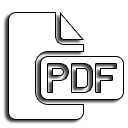A Analysis of Anionic Surfactant Levels in Barito River Water Using Visible Spectrophotometry Method
Abstract
ABSTRACT
BACKGROUND: Water is one of the resources that contains the main needs including humans, animals and plants. Indonesia is a country that has a lot of air resources and is known as a maritime country consisting of thousands of islands. Indonesia also has more than 500 rivers. One of them is the Barito River located in Ulu Benteng Village RT.11 Barito Kuala Regency is still used by the community for daily needs. One of them is used for clothing and drinking water sources.
OBJECTIVE: To determine and compare the levels of anionic surfactants in the Barito river with different time intervals, namely the 1st, 4th and 7th days.
METHODS: This research uses descriptive research with group design. The population and sample used were all of the Barito River water with inclusion and exclusion criteria using the Visible Spectrophotometer method.
RESULTS: Significant value of the results of calculations using SPSS of 0.593 with the results of the value of the relationship coefficient (r) 0.997 and the results of the first day level of 4 mg/L, day 4 of 2 mg/L and day 7 of 2, 8 mg/L which determines levels exceeding the normal threshold that has been determined by Government Regulation No. 82 of 2001 which is 0.2 mg/L.
CONCLUSION: Anionic surfactant content in the Barito River water has a value that exceeds the threshold of Government Regulation Number 82 Year 2001, namely on day 1 of 4 mg/L, day 4 of 2 mg/L and day 7 of 2,8 mg/L. The significance value is 0.593 which means that there is no time difference and the hypothesis is rejected.
Keywords: Visible Spectrophotometer, Barito River, Anionic Surfactant
References
Alwi, M dan Maulina. 2012. Pengujian Bakteri Coliform dan Escherichia coli Pada Beberapa Depot Air Minum Isi Ulang di Kecamatan Palu Timur Kota Palu. Jurnal Biocelebes. [Internet]. Vol.6 (1):40-47.Tersediapada:https://bestjournal.untad.ac.id/index.php/Biocelebes/article/view/3889/2852 [diakses: Juni 2012].Depkes RI. 2001. Peraturan Pemerintah Republik Indonesia Nomor 82 Tahun 2001 TentangPengelolaan Kualitas Air dan Pengendalian Pencemaran. Jakarata: Kementerian Lingkungan Hidup. Tersedia pada:https://www.slideshare .net/infosanitasi/pp-82-th-2001pengelolaan-kualitas-air-dan-pengendalian-pencemaran-air [diakses: 30 Maret 2012].Dinas Sumbar Daya Air dan Drainase Kota Banjarmasin. 2016Gambaran Singkat Sungai Barito. Banjarmasin: Dinas Sumber Daya Air dan Drainase.
Justitia,M. 2011. Analisis Surfaktan Anionik (Deterjen) pada Limbah Cair Domestik MenggunakanSpektrofotometer Metode MBAS. Skripsi. [Internet]. Tersedia pada: http://www.repository.usu.ac.id [diakses: 13 Juli 2011].Notoatmodjo, S. 2010. Metodologi Penelitian kesehatan. Renika Cipta. Jakarta.Santi SS. 2009. Penurunan Konsentrasi Surfaktan Pada Limbah Deterjen Dengan Proses Photokatalitik Sinar UV. Jurnal Teknik Kimia. [Internet]. Vol. 4 (1): 260-264. Tersediapada:https://media.neliti.com/media/publications/134363 -ID-penurunan-kosentrasi-surfactan-pada-limb.pdf [diakses: September 200
Downloads
Published
How to Cite
Issue
Section
License
Copyright (c) 2020 Journal of Pharmaceutical Care and Science

This work is licensed under a Creative Commons Attribution 4.0 International License.
















